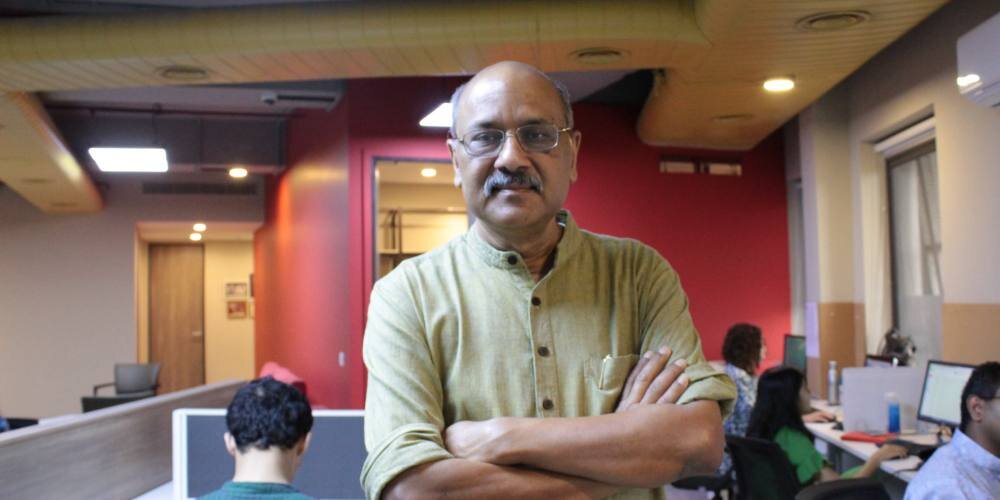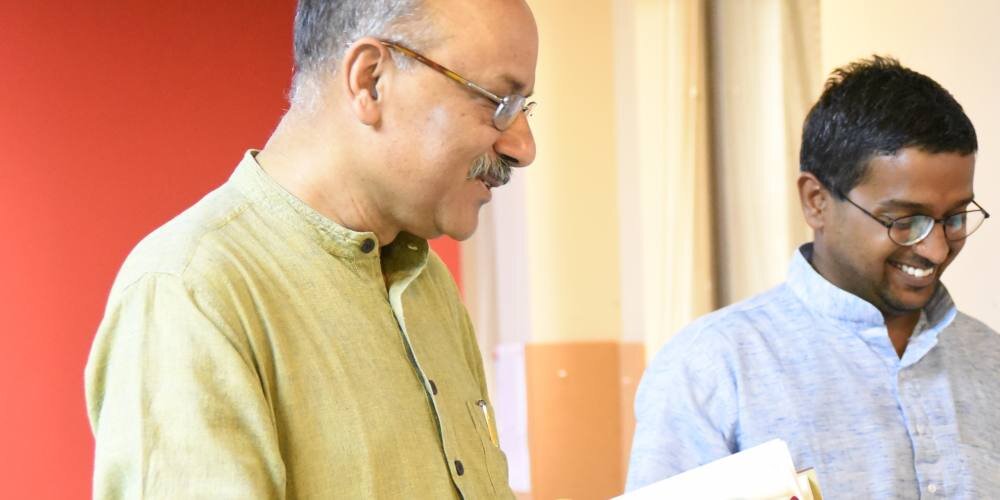India’s most famous newspaperman Shekhar Gupta pivots to digital with The Print.
Indian journalist Shekhar Gupta has founded a politics-focused, digital platform called The Print. Photo supplied.
In 2014, when Shekhar Gupta stepped down as CEO and editor-in-chief of The Indian Express, speculation swirled around his next move. Gupta is one of India’s most famous journalists, arguably the last of a tribe of celebrity editors almost as famous as their publications.
During his 19-year reign at the English-language publication, Gupta transformed the newspaper into the most influential publication in New Delhi. He writes a regular column called National Interest and hosts Walk the Talk, a popular weekly interview show on television channel NDTV. The parties held at his house in an upscale Delhi neighbourhood are attended by India’s elite and powerful.
Soon after his exit from the Express, Gupta returned to India Today, the magazine he left in 1995, but that stint lasted for only two months. The rumor mill went into overdrive.
A farewell to newsprint
But nothing came to pass—until last year, when Gupta created a company called Printline Media and launched a digital platform called The Print.
In many ways, it makes sense even for a newspaperman like Gupta to turn to digital.
Since 2010, internet use in India has grown at a frantic pace, driven by the rapid spread of mobile.
Print readership is still growing in India but English-language newspaper advertising grew just 4% in 2015 compared with a 38% spike in digital advertising, according to consultancy firm KPMG.
In an interview at his company’s sprawling, new office in an area of central Delhi often referred to as India’s Fleet Street (it is home to publications such as The Times of India, Business Standard and The Hindu), Gupta says The Print offers premium, focussed coverage of politics in India.
“Depending on which brand you prefer, you can call it the Bentley of political journalism or the Bloomberg of political journalism in India,” he says.
Gupta says he christened his venture The Print to signal to readers that its standards would be high. “We feel there is a belief that once you go digital, the bar is lowered.”
An influential audience
The Print’s target readership, according to Gupta, is centered on the influential politicians, industrialists and bureaucrats who have a stake in policymaking decisions across the country. “We will build several products… all will dovetail into the prime offering—in-depth power journalism addressing the influencer community and the community of youngsters who are aspiring to become part of the influencer community,” he says.
Gupta followed the same rulebook at the Express, which does not chase large circulation numbers as is the wont of its competitors in India.
In May, The Print raised an undisclosed sum from a bunch of Indian billionaires such as Ratan Tata, Nandan Nilekani, and Uday Kotak, who together own 20 percent of the newspaper. Gupta owns the rest.
The Print began with a series of events called Off The Cuff in which Gupta and a senior colleague interview a mix of politicians, bureaucrats, lawyers, actors and industrialists. A website was launched in January and it recently underwent a significant design overhaul.
A team of about 35 journalists is in place and hiring for a sales and marketing team is underway.
But The Print faces several challenges.
It has entered a teeming digital news market in which a scrum of independent news sites such as Scroll, The Quint and The Wire are all jostling for the attention of audiences, not to mention the popular websites of established newspapers such as The Times of India, Hindustan Times and the Express.
A team of about 35 journalists is in place and hiring for a sales and marketing team is underway. Photo supplied.
Most of The Print’s team, including Gupta, have a newspaper background with little experience in the digital news market.
“Our focus so far has been to get people who can deliver the right content. Now the challenge is in the delivery of content. We will look to hire people from the delivery side,” says Gupta.
Gupta says The Print will abstain from “breaking news” stories, for now. ”We will try and tell our audience what the news means because we presume readers [already] know the basic breaking news.”
The website is clean and reader-friendly by virtue of the absence of display ads. But how will The Print sustain its journalism?
“I wish I had greater clarity to speak about that,” Gupta says when asked about the revenue model. He says that once his team gets the content right, the focus will shift to monetising it.
“We will not have the normal kind of ads. We will be different because we want to retain the premium character. If we do high intensity and greater in-depth coverage of the government and politics, the quality of audience will bring the right kind of advertising to us.”
Tweet
“...the quality of audience will bring the right kind of advertising to us.”
The focus and challenge before the publication, says Gupta, is to be the best at what it does.
“We will stand out if we do that. It is simple.”
TWEET


